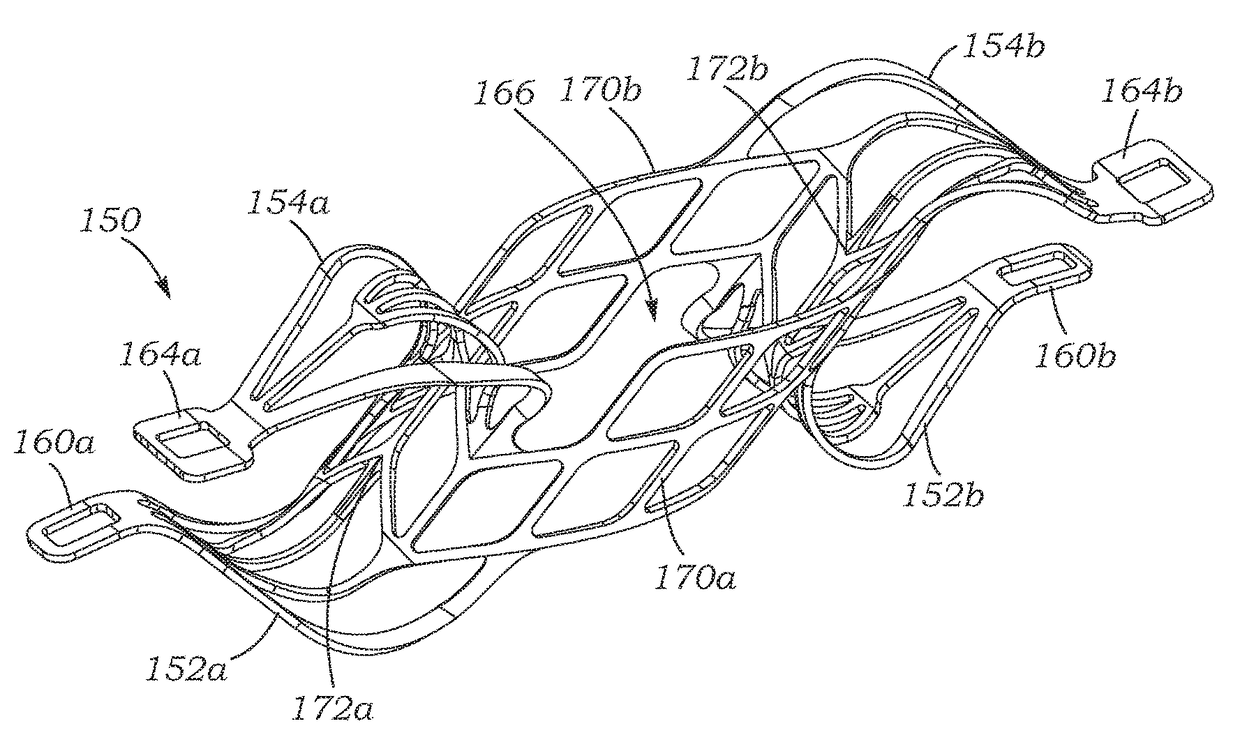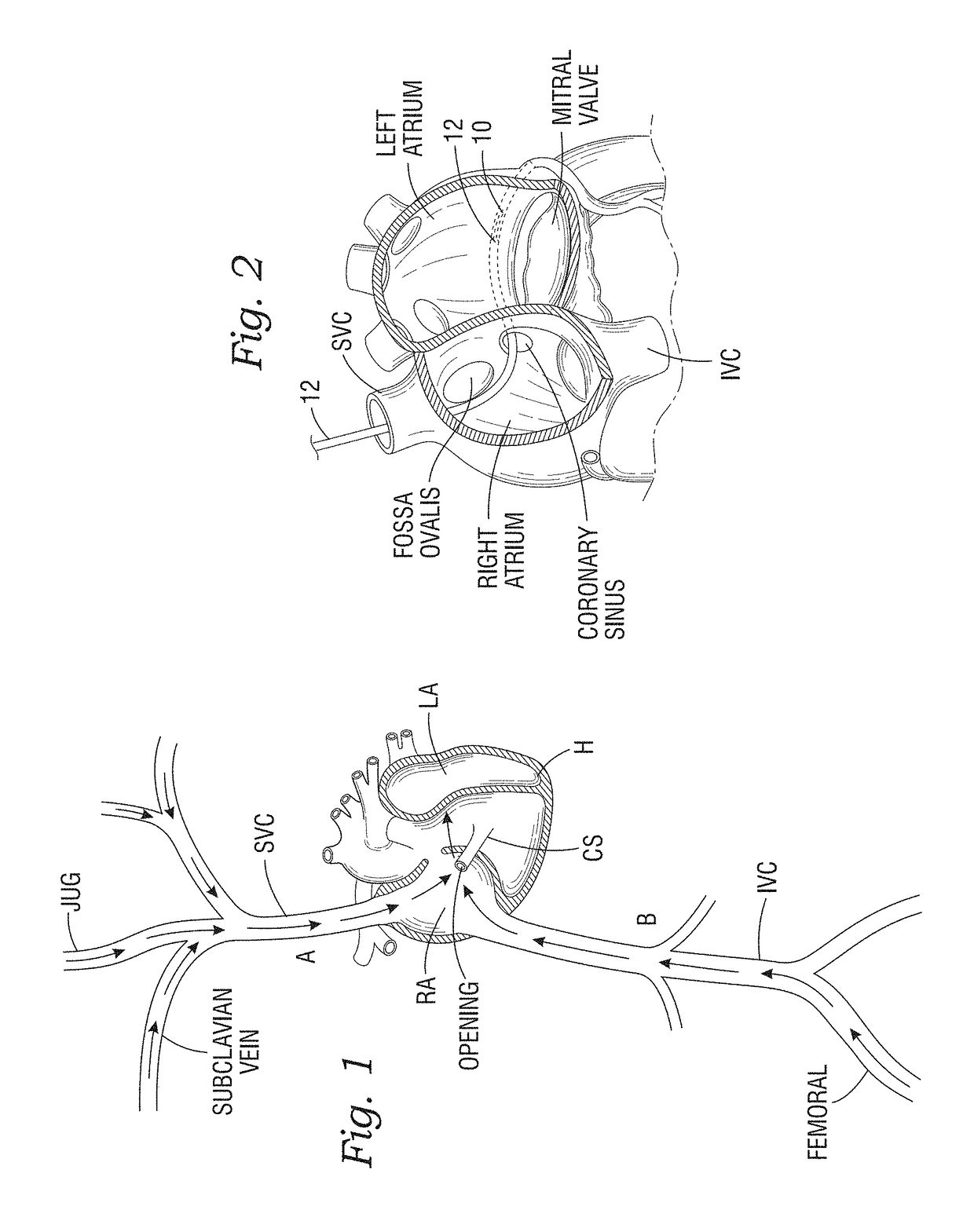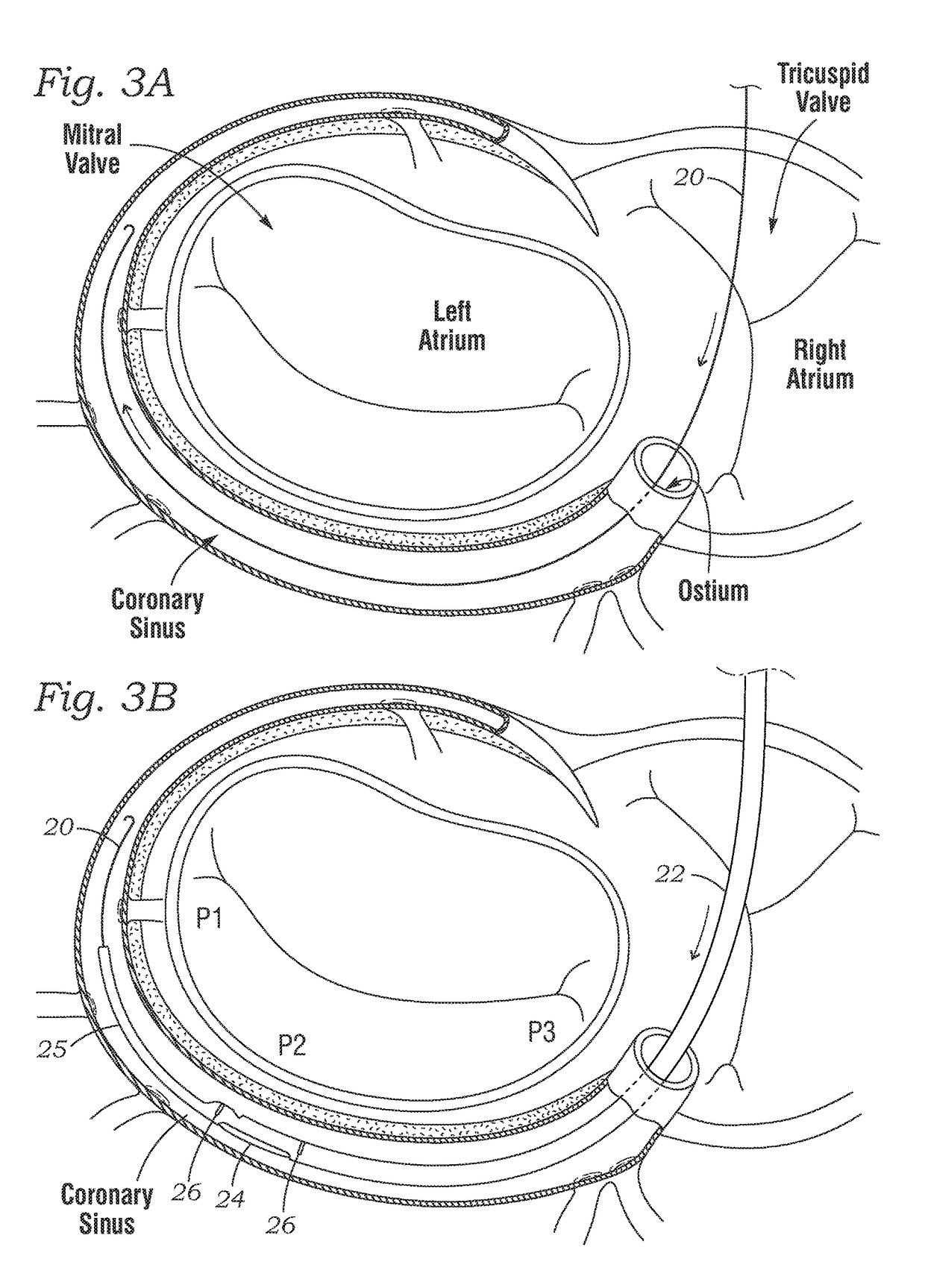Expandable cardiac shunt
a shunt and expandable technology, applied in the field of expandable shunts, can solve the problems of increased end-diastolic pressure, few, if any, proven effective treatments, and symptomatic, and achieve the effect of facilitating collaps
- Summary
- Abstract
- Description
- Claims
- Application Information
AI Technical Summary
Benefits of technology
Problems solved by technology
Method used
Image
Examples
Embodiment Construction
[0047]The present application discloses methods and devices that allow for elevated Left Atrial Pressure (LAP) to be reduced by shunting blood from the left atrium to the coronary sinus. The primary method includes implanting a shunt defining an open pathway between the left atrium and the coronary sinus, although the method can be used to place a shunt between other cardiac chambers, such as between the pulmonary artery and right atrium. The shunt is expandable so as to be compressed, delivered via a low profile sheath or tube, and expelled so as to resume its expanded state. The method also includes utilizing a deployment catheter that first creates a puncture in the wall between the left atrium and the coronary sinus. Details of these methods, implants and deployment systems will be described below.
[0048]FIG. 1 illustrates several access pathways for maneuvering guidewires and catheters in and around the heart to deploy expandable shunts of the present application. For instance, ...
PUM
 Login to View More
Login to View More Abstract
Description
Claims
Application Information
 Login to View More
Login to View More - R&D
- Intellectual Property
- Life Sciences
- Materials
- Tech Scout
- Unparalleled Data Quality
- Higher Quality Content
- 60% Fewer Hallucinations
Browse by: Latest US Patents, China's latest patents, Technical Efficacy Thesaurus, Application Domain, Technology Topic, Popular Technical Reports.
© 2025 PatSnap. All rights reserved.Legal|Privacy policy|Modern Slavery Act Transparency Statement|Sitemap|About US| Contact US: help@patsnap.com



